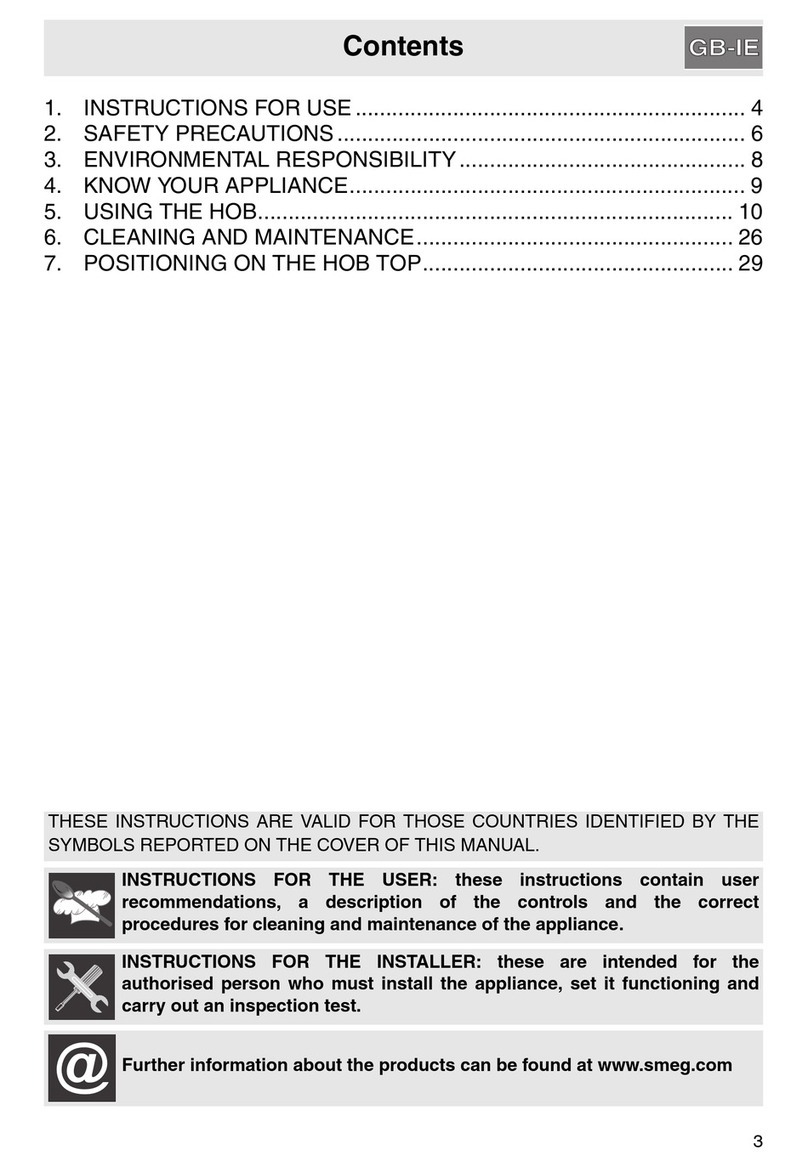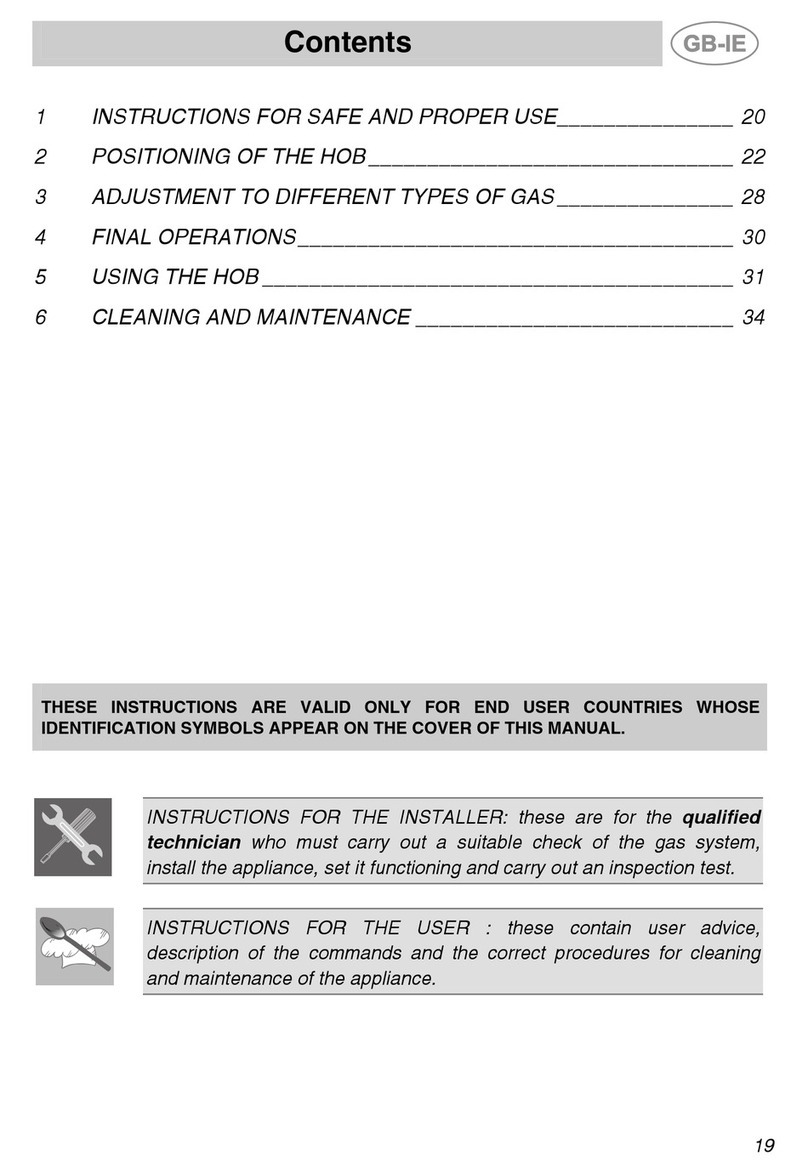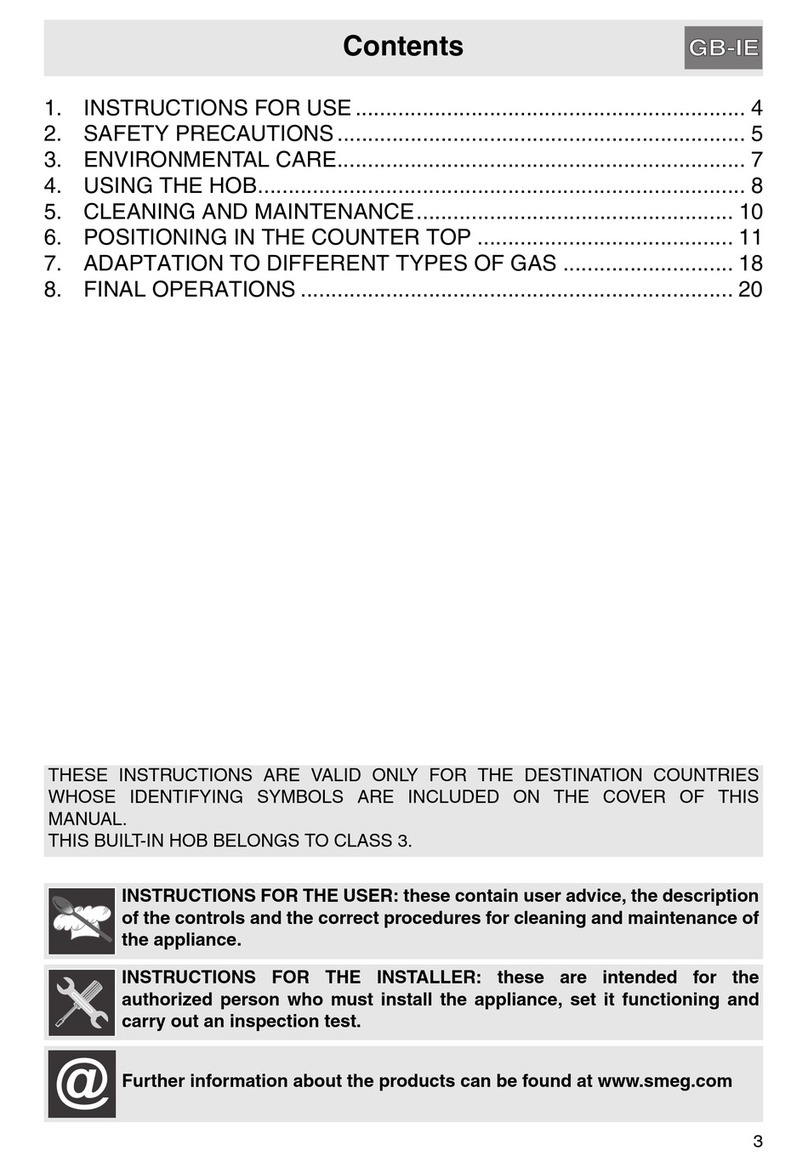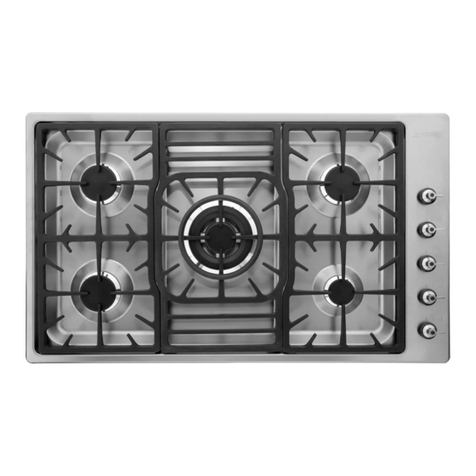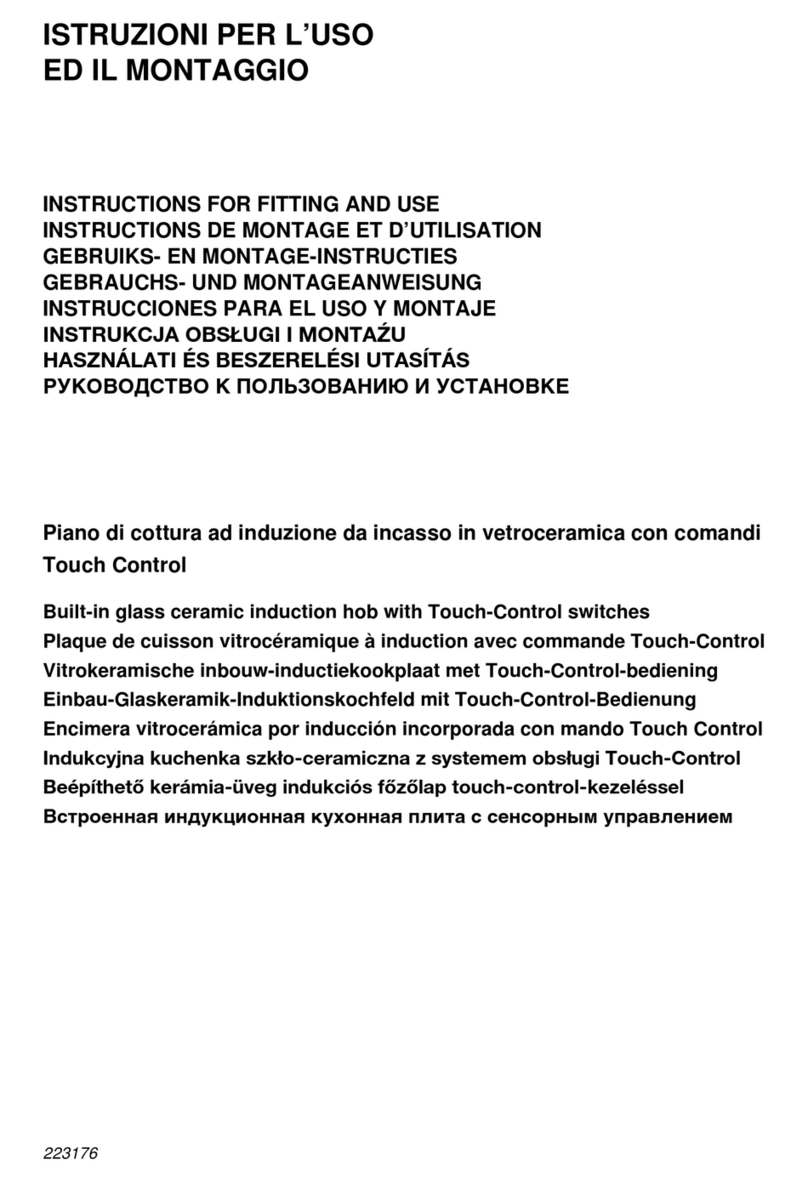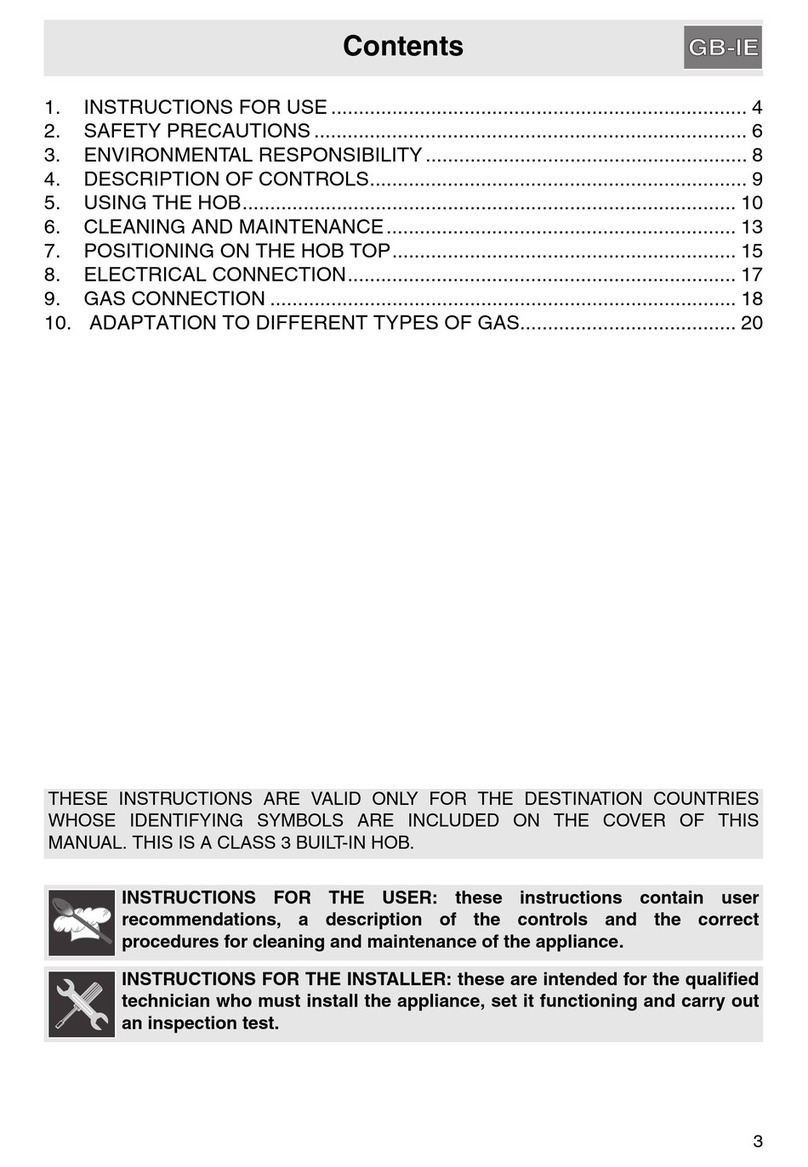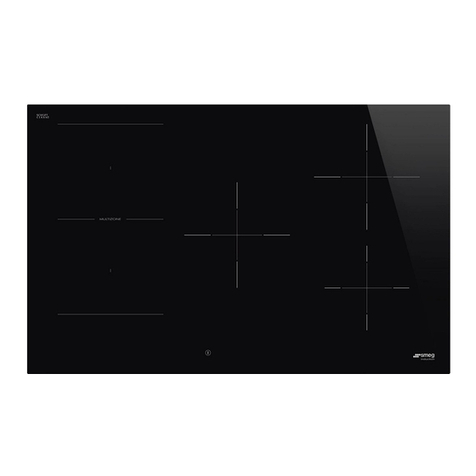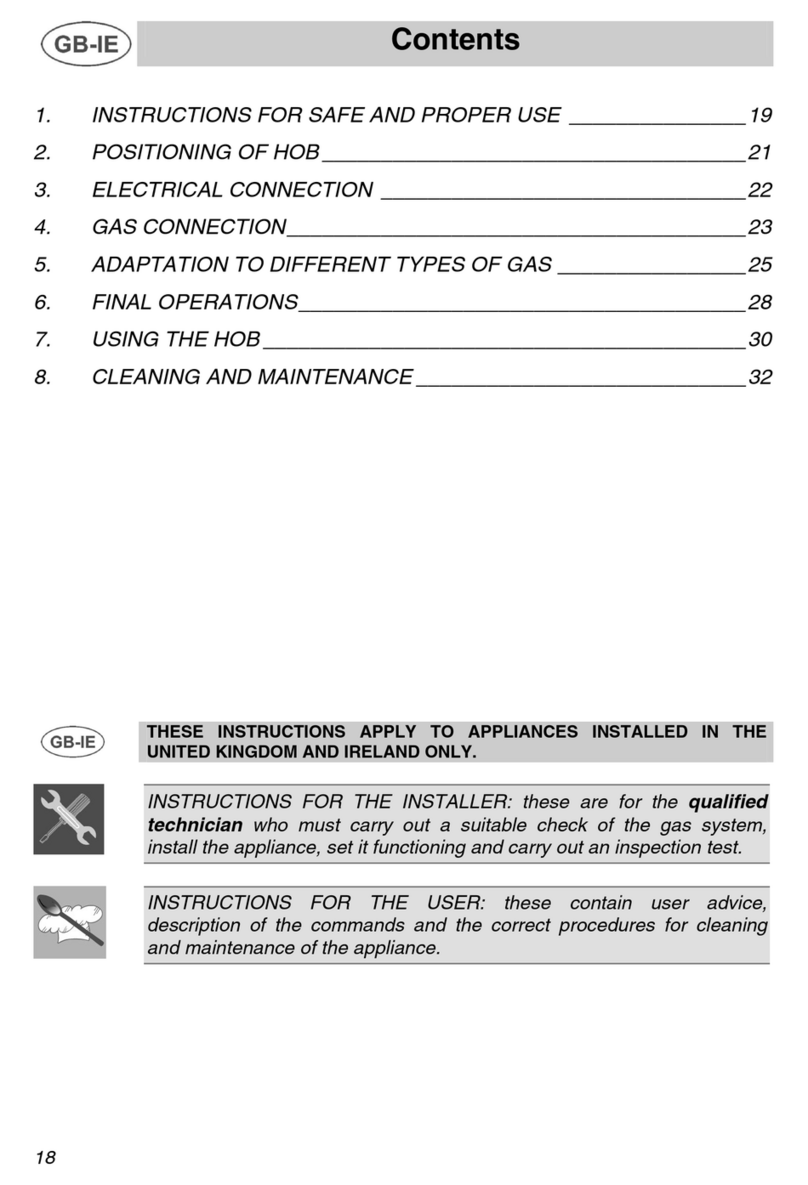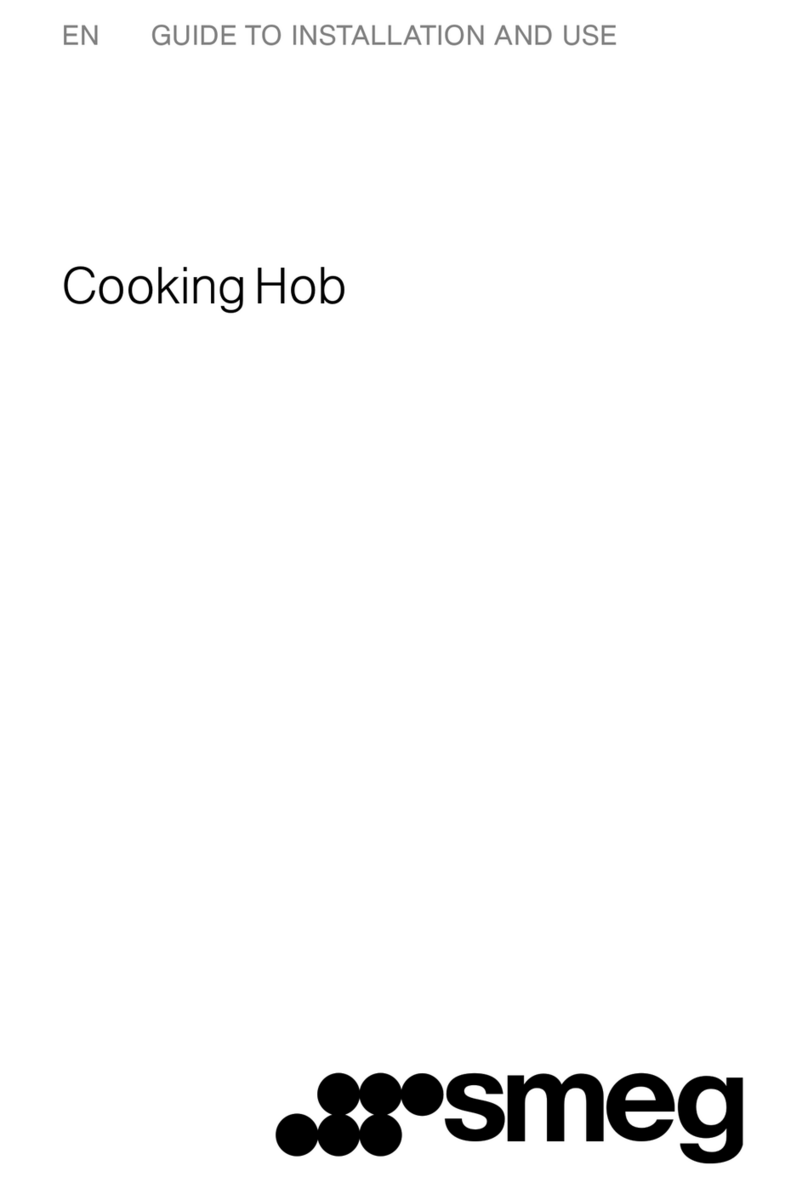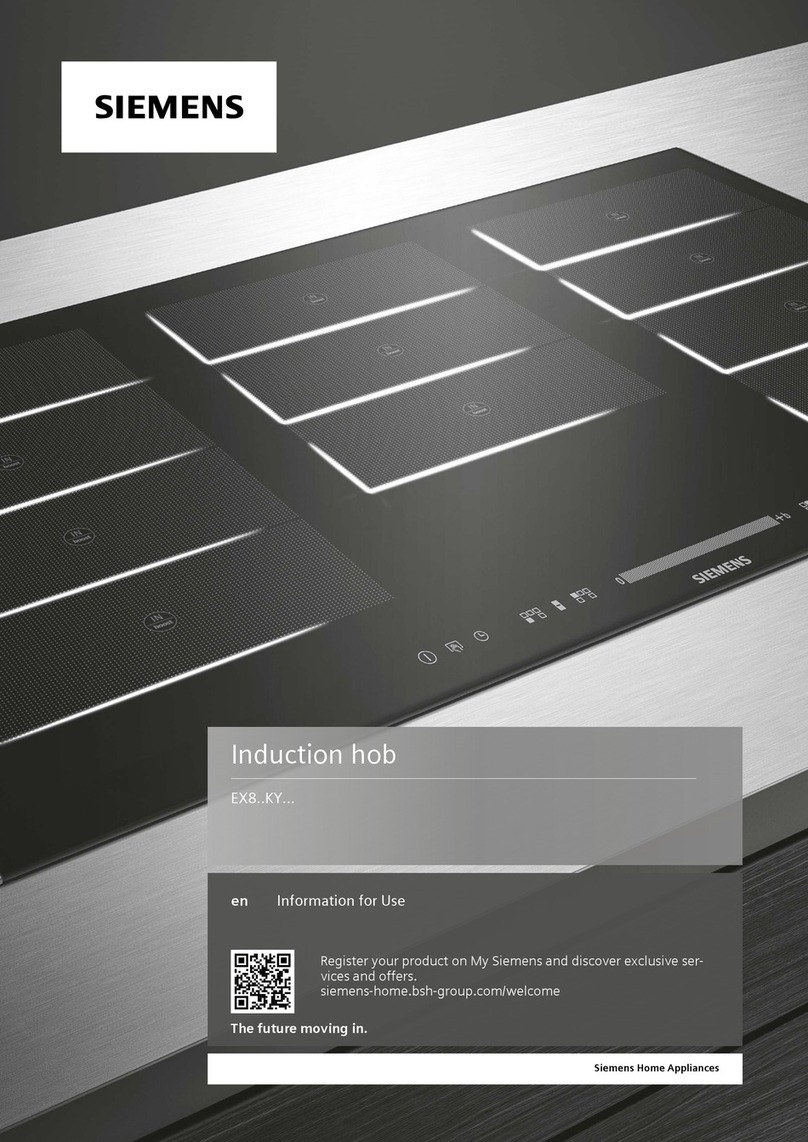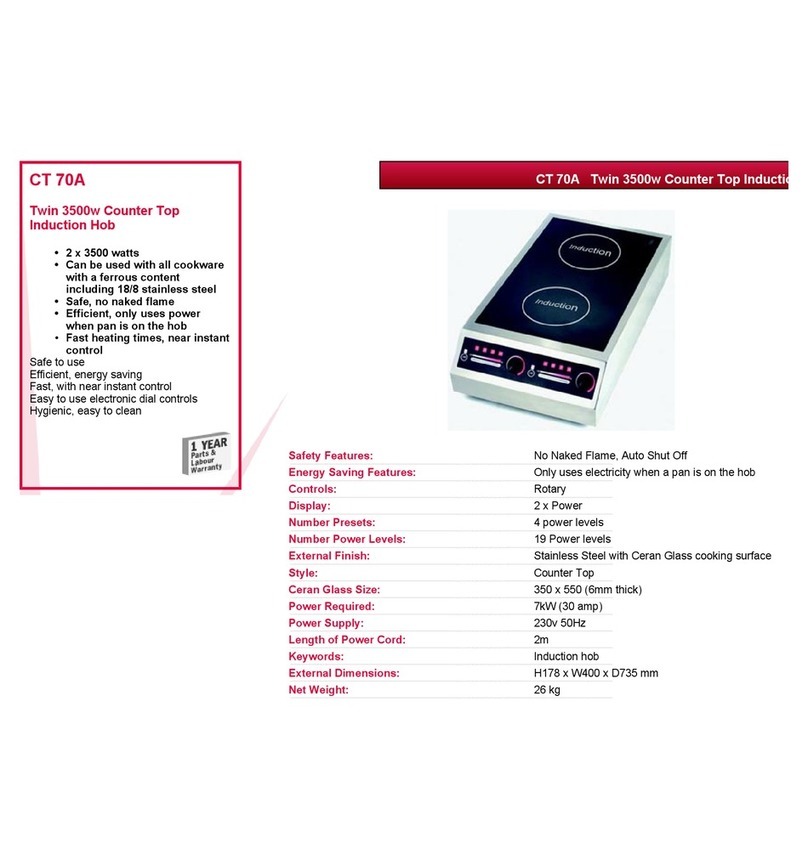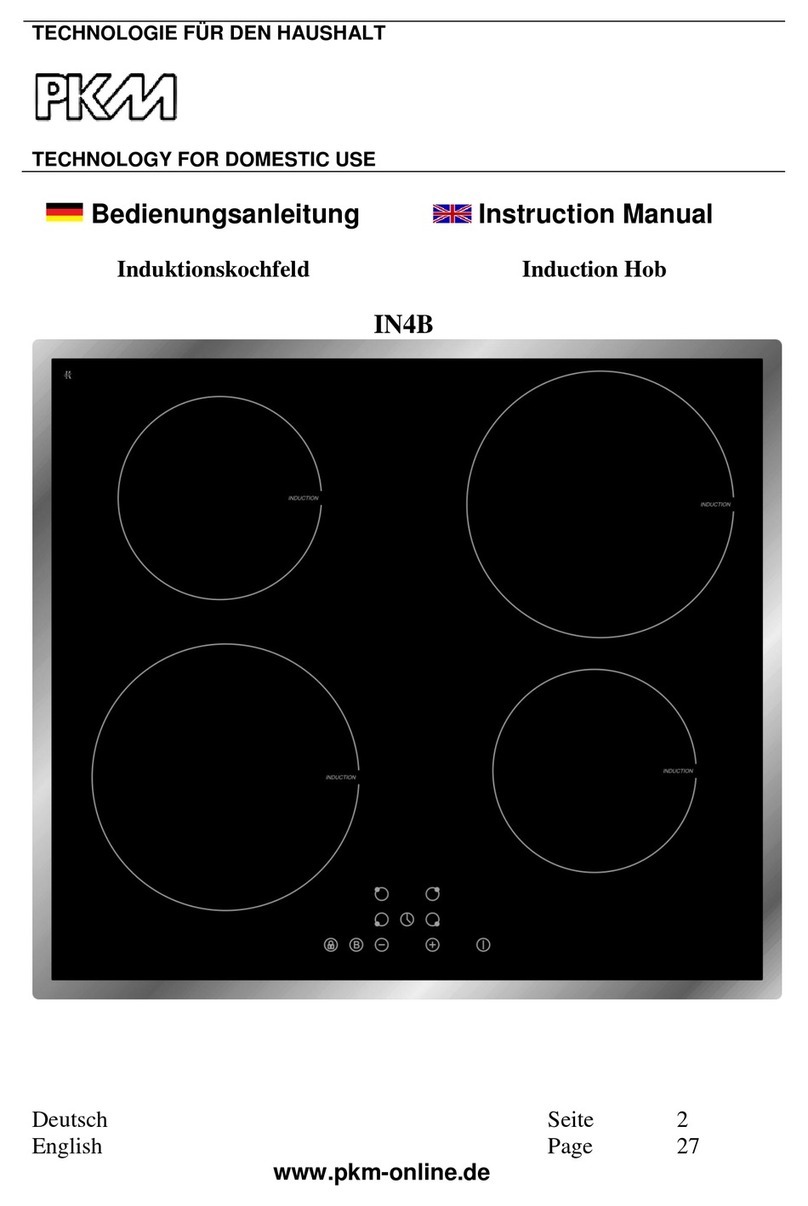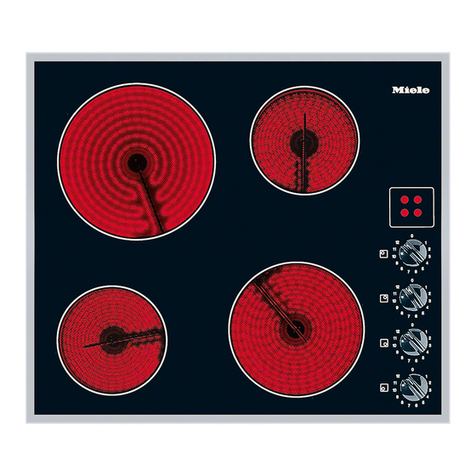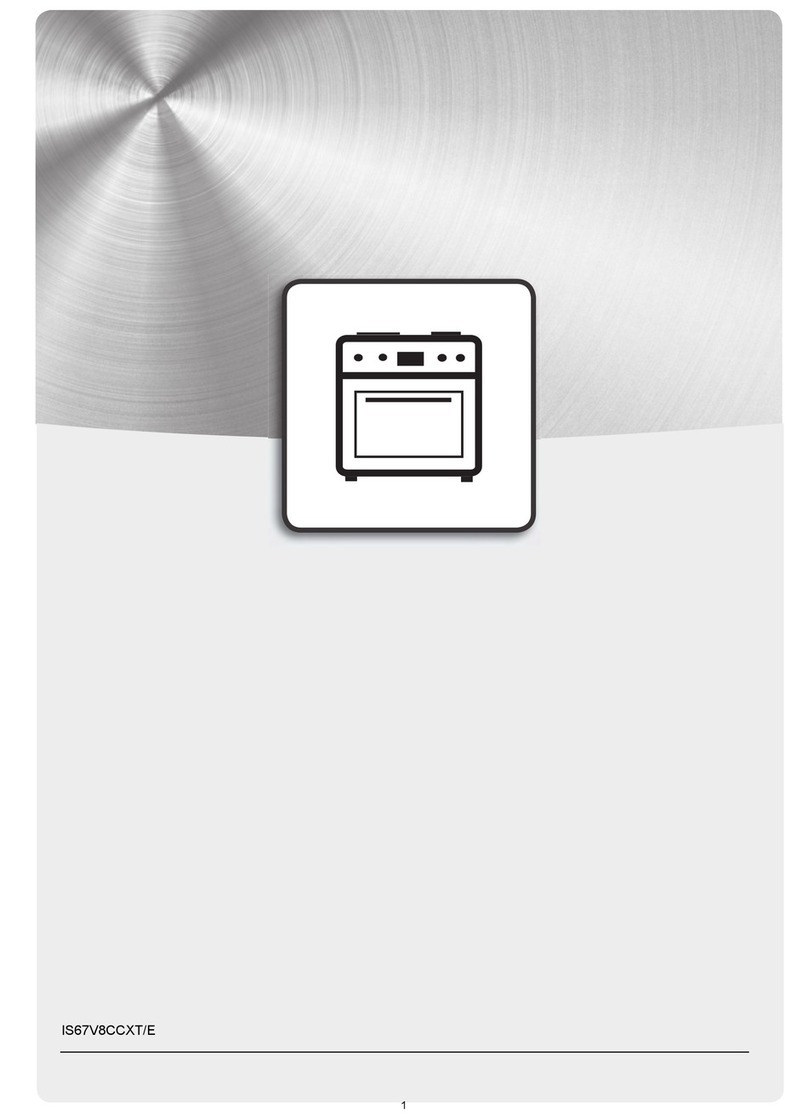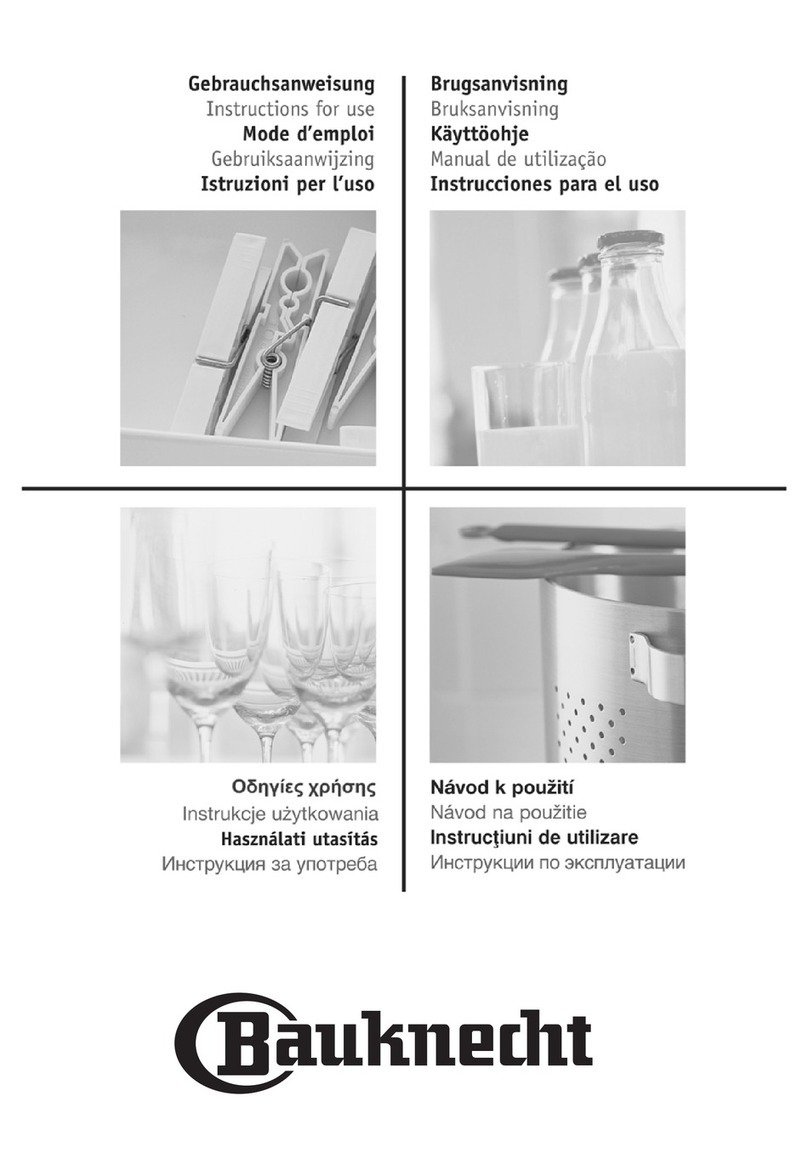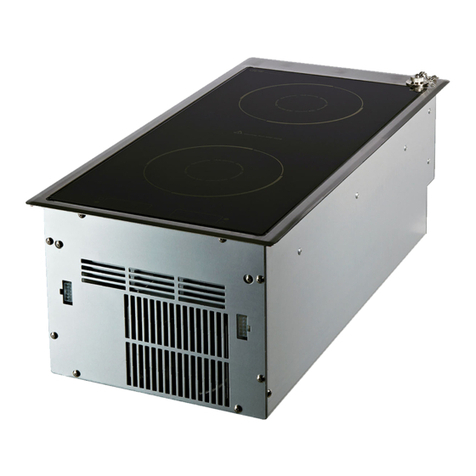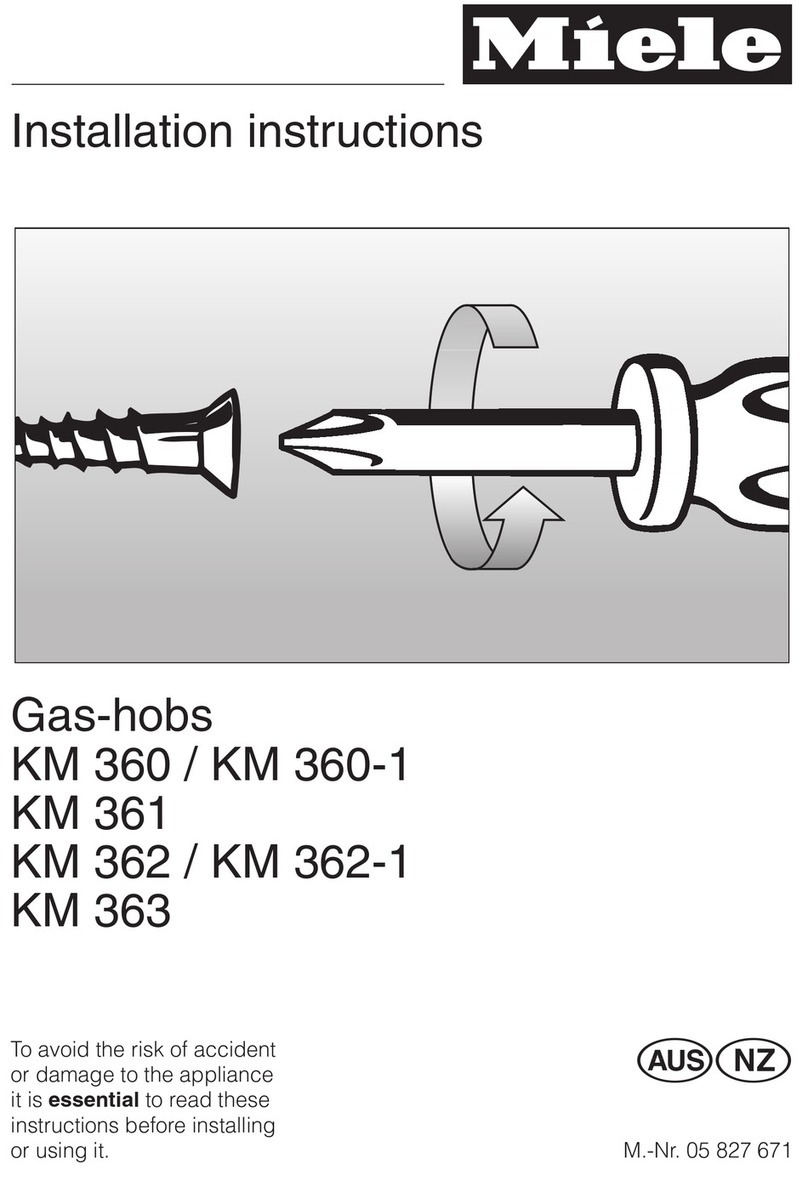
Instructions
6
• Do not use cleaning products
containing chlorine, ammonia or
bleach on steel parts or parts with
metallic surface finishes (e.g.
anodizing, nickel- or chromium-
plating).
• Do not wash the removable
components such as the cooktop
pan stands, flame-spreader
crowns and burner caps in a
dishwasher.
• Do not wash removable parts
such as the cooktop trivets, flame-
spreader crowns and burner caps
in the dishwasher.
Installation
• TTHIS APPLIANCE MUST NOT
BE INSTALLED IN BOATS OR
CARAVANS.
• The appliance must not be
installed on a stand.
• Position the appliance into the
cabinet cutout with the help of a
second person.
• To prevent overheating, the
appliance must not be installed
behind a decorative door or a
panel.
• The gas connection should be
carried out by authorised persons.
• Installation with flexible hose must
be carried out so that the length of
the piping does not exceed 2 metres
when fully extended as regards
flexible steel hoses and 1.5 metres
in case of rubber hoses.
• The hoses should not come into
contact with moving parts and
should not be crushed in any way.
• If required, use a pressure
regulator that complies with
current regulations.
• After carrying out any operation,
check that the tightening torque of
gas connections is between 10 Nm
and 15 Nm.
• At the end of the installation, check
for any leaks with a soapy
solution, never with a flame.
• Have the electrical connection
performed by authorised persons.
• The appliance must be connected
to earth in compliance with
electrical system safety standards.
• Use cables withstanding a
temperature of at least 90°C.
• The tightening torque of the screws
of the terminal supply wires must
be 1.5 - 2 Nm.
• Before installation, make sure that
the local gas supply (gas type and
pressure) and the settings of the
domestic appliance are
compatible.
